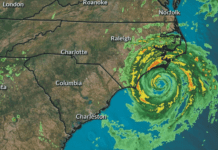In our review of knives this month, we didn’t have space to talk much about how important they are aboard a boat. They’re vastly important, yet I’ve been amazed to discover several times in recent years that I’m the only person aboard carrying one.
Actually, it’s a Leatherman Wave in a belt sheath, and I literally go nowhere without it, except to bed and the shower, and even then I call to it once in a while. I hate having to check it in my backpack when flying, because it seems to me that hurtling through the air in a complex mechanical device, with the thought of suicidal maniacs aboard, is exactly the situation in which a Leatherman might provide a measure of comfort. (Talk about Walter Mitty.)
In any case, even a Leatherman is a compromise on board when you’re under sail and the running rigging is loaded up. In exchange for the versatility of the multi-tool, you give up a degree of whip-it-out safety. Same with carrying a standard folding rigging knife or Swiss Army knife on a lanyard in your pocket. In a breeze, whether passagemaking offshore or in a race around the buoys, it’s best to have a fixed sheath knife on your belt, situated near the middle of your back so that you can reach the handle with either hand. It’s an old picture, but it ain’t hokey.
If a person has a hand sucked into a heavily loaded halyard winch, or there’s an override on your primary winch and the spinnaker sheet winch is occupied, with minimal steering and a collision imminent; or you’re suddenly dragging for fish with your spinnaker and you find that someone has tied knots in the ends of sheet and guy; or you’re on your beam ends with the boom dragging through the water and beginning to look odd, and you can’t release the preventer, and the bloody thing refuses to break… well, these are all times when a sheath knife needs to be deployed smartly and put to work.
The few times I’ve seen things like that happen, the decision to cut has taken about three seconds, and the grabbing of the knife and the cutting-maybe another three. Six seconds can be a long time in an emergency, especially if there’s a limb involved.
See how long it takes to get your blade out and ready to cut. If you’re comfortable with the time, good. But to carry no knife at all is just nuts.
Aside from everyone’s personal knives, there should be a couple of others strategically positioned around the boat. Some big-boat sailors keep one strapped to the solid vang, or in a winch handle holder at the mast partners. Some people strap them to the pedestal. If you do that, put it down low, and check for magnetic influence. A cubby locker in the cockpit coaming is a good place. I keep a folding rescue knife Velcro-ed right in the companionway, which my wife things is a bit geeky. So be it.
The traditional sailor’s blade shape has been a sheepfoot, partly so as not to have a dagger point right out front on a lurching deck, but also because the top part of the blade is dull, and can be handled, and the blade surface is big enough to let the knife act as pry-bar, stirrer, and spoon. Some sailors, however, think the drop-point blade is just as versatile in other ways, and are willing to give up a degree of safety for it. We gave Best Buys this time to two pointy-ended knives, but if you’re more traditional, you won’t have to spend much more for a high-quality sheepfoot blade like the Spyderco D’Allara or some of the other rescue knives reviewed. The Boye Dendritic Cobalt Boat Knife, which won the review last time but wasn’t re-evaluated for this go-round, has what I think is the ideal blade shape for on-board use-but that knife will run you $99.
Do settle on some kind of personal knife or multi-tool, though, if you don’t normally carry one. It’s one of the most important pieces of safety equipment you can have on board, or anywhere else, for that matter.
-Doug Logan




































